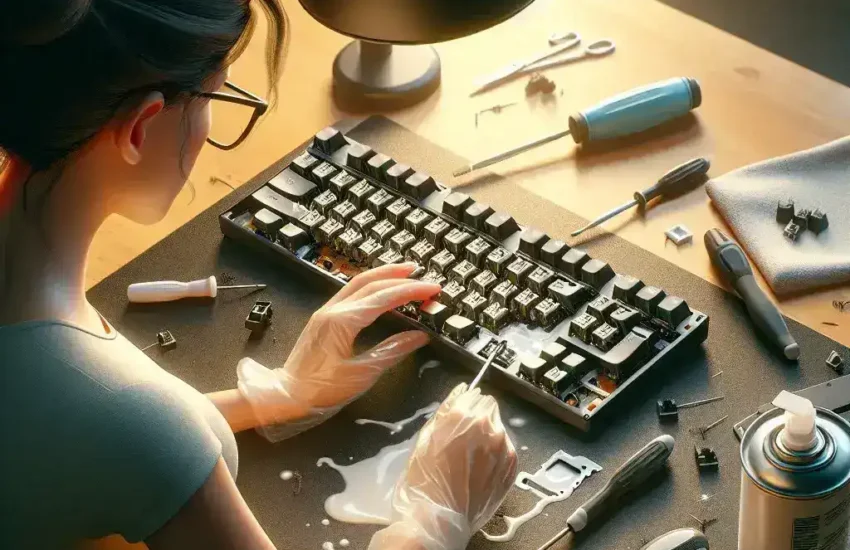Keyboard keys can become sticky due to dust, debris, and spills or even due to wear and tear. This can hinder your efficiency and make typing uncomfortable. Here’s a comprehensive guide on how to fix sticky keyboard keys, regardless of the cause.
Common Causes of Sticky Keyboard Keys
| Cause | Description |
|---|---|
| Dust and Debris | Accumulation of dust, crumbs, and other particles underneath the keys. |
| Spills | Spilling liquids like water, coffee, and soda can make keys sticky. |
| Wear and Tear | Frequent use can wear down keys, causing them to stick. |
| Lack of Cleaning | Not cleaning your keyboard regularly can lead to sticky keys. |
Step-by-step Guide to Fix Sticky Keyboard Keys
Step 1: Turn Off and Disconnect the Keyboard
Your first step should be turning off your laptop or computer and disconnecting the keyboard. This is essential for safety before starting the cleaning process.
Step 2: Remove the Sticky Keys
Use a small flat-head screwdriver or a keycap puller to carefully remove the sticky keys from the keyboard. Ensure that you don’t damage the keycaps or the switches underneath.
Step 3: Clean the Removed Keys
Soak the removed keys in a bowl of warm, soapy water. Let them sit for about 15-20 minutes. Use a soft brush or cloth to scrub away any dirt or debris. Rinse and dry them completely.
Step 4: Clean the Keyboard Base
While the keys are soaking, use compressed air to blow out any loose debris from the keyboard base. For stubborn dirt, use a cotton swab dipped in isopropyl alcohol to gently clean the key switches and surrounding areas.
Step 5: Reassemble the Keyboard
Once everything is dry and clean, reattach the keys by pressing them firmly back into their positions. Ensure that they click back into place properly.
Preventive Measures to Avoid Sticky Keys
- Regular Cleaning: Clean your keyboard regularly with compressed air and wipes to prevent dust and debris buildup.
- Avoid Eating & Drinking: Keep food and liquids away from your keyboard to avoid accidental spills.
- Use Keyboard Covers: Consider using a keyboard cover to protect against dust and spills.
- Proper Storage: Store your keyboard in a dust-free environment when not in use.
When to Seek Professional Help
If your keyboard keys remain sticky despite following these steps, or if your keyboard is showing more severe issues like erratic behavior or unresponsive keys, it might be time to seek professional help. A technician can disassemble the keyboard more thoroughly and check for damaged components that might need replacement.
Conclusion
Fixing sticky keyboard keys is a manageable task that can be resolved with some basic cleaning tools and a bit of patience. Regular maintenance and adopting preventive measures can significantly reduce the chances of encountering sticky keys in the future, ensuring a smoother and more efficient typing experience.

